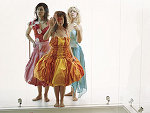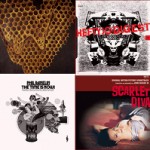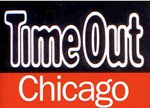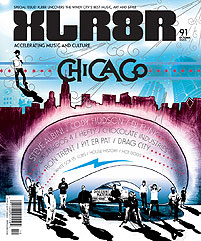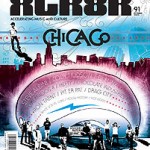Interview
XLR8R
October 2005
Link
Located on walls around São Paulo, the fantastically bright paintings of Os Gemeos (“The Twins”) grab the attention of passersby like a float from Carnival. Full of fluid lines, eye-popping colors (often yellow and red), and surreal characters, their work would be at home in a children’s book, but the story of these artists runs much deeper than Dr. Seuss.
Growing up in the Cambuci neighborhood of São Paulo, artistically inclined identical twins Octavio and Gustavo Pandolfo started doing street art in 1987, after discovering hip-hop culture and b-boying. They’ve since become fixtures in the Brazilian art world, founding Fiz, the first full-color magazine covering graffiti in their hometown. Though hip-hop exerts a strong influence on their work, they’ve never strayed far from their roots, always incorporating the values and visuals of Brazilian folk art in their painting.
The story has even gone international. After an auspicious meeting with San Francisco artist Barry McGee (Twist) in 1993, the twins have begun to exhibit around the world. Their paintings and installations have been the focus of shows at San Francisco’s Luggage Store Gallery and New York’s prestigious Deitch Projects, and earlier this summer they painted a mural at Coney Island as part of Creative Time and Espo’s Dreamland Artist Club project.
As their style has matured over the years, they’ve broadened their storytelling skills beyond latex paint and rollers. Many pieces now include long passages of Portuguese text, an apt metaphor for their style, where every piece is merely a page in a much larger book.
XLR8R: How long have you been painting?
Since we’ve known paper and pencil. When we were children, our grandfather worked in a big print factory, so he always had a lot of paper at home. When we stayed at his house we’d draw all night. Our family also supported us a lot. Our parents would buy us paint and brushes and our older brother, Arnaldo, would help us a lot. He’d stay up and draw with us, and he always had good ideas.
How did you get involved with graffiti? What were your artistic influences?
We learned about graffiti in 1987. We always liked to go out and play in the streets. We’d play with toys, set trashcans on fire, and even ring the doorbells of our neighbors and run away. At this time in Cambuci, the part of the city we were growing up in, there were a lot of b-boys. They’d dance in front of our houses until late at night, and they had graffiti designs on their clothes. We liked that.
Tell us about doing your first graf piece.
We went with our family to visit our grandmother, who lived like 10 blocks from our house. Our dad didn’t like graffiti and hip-hop at this time, so we had to be careful when we put the paint cans in the car and not make a sound. It was very funny. We went inside our grandmother’s for a minute then told our dad that we wanted to go play downstairs. Then we stole the keys to his car, took the cans of paint and bombed three walls near there. They were very ugly pieces!
Folk tales play a big part in your work. Why do you think they transfer well to graffiti?
It’s very simple. Folk art shows the roots of the country. Brazil is very rich in culture in all segments: dance, music, and art. We want to be an example for the world. We want people to say Brazilians have this beautiful culture, a very simple one with a lot of energy and love inside, like our Carnival. We don’t need things, like the best new shoes or a brand new car, to be happy. We worry more about what’s inside, not what’s outside. We just need a beer in the summer and some friends. We love simplicity. We love that you can go out and play football with your friend in the middle of the street, or if you’re a little cold you can make a fire in the street and be warm. Simplicity, freedom, and the ability to improvise–these are the important parts of being Brazilian.
Read more…



